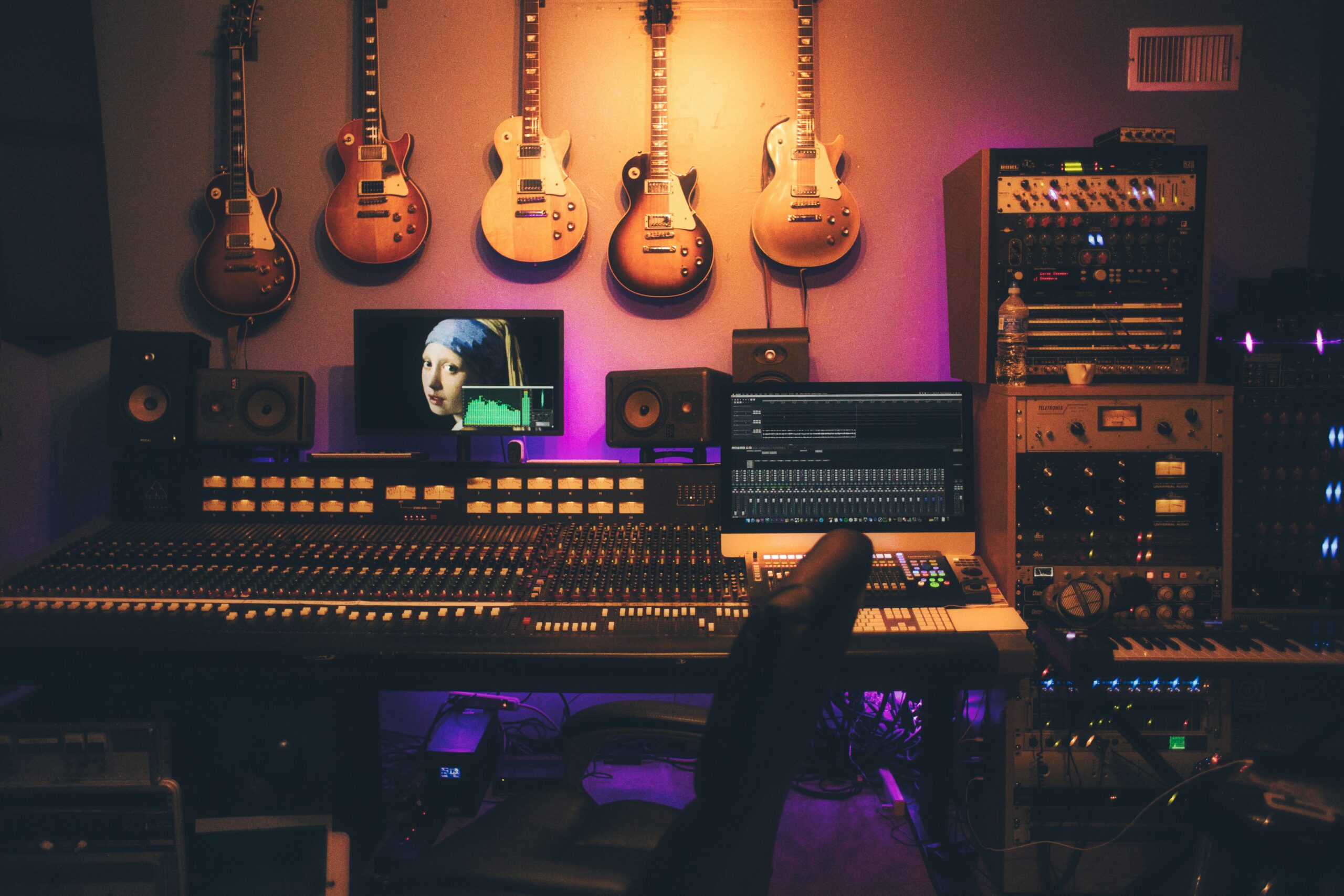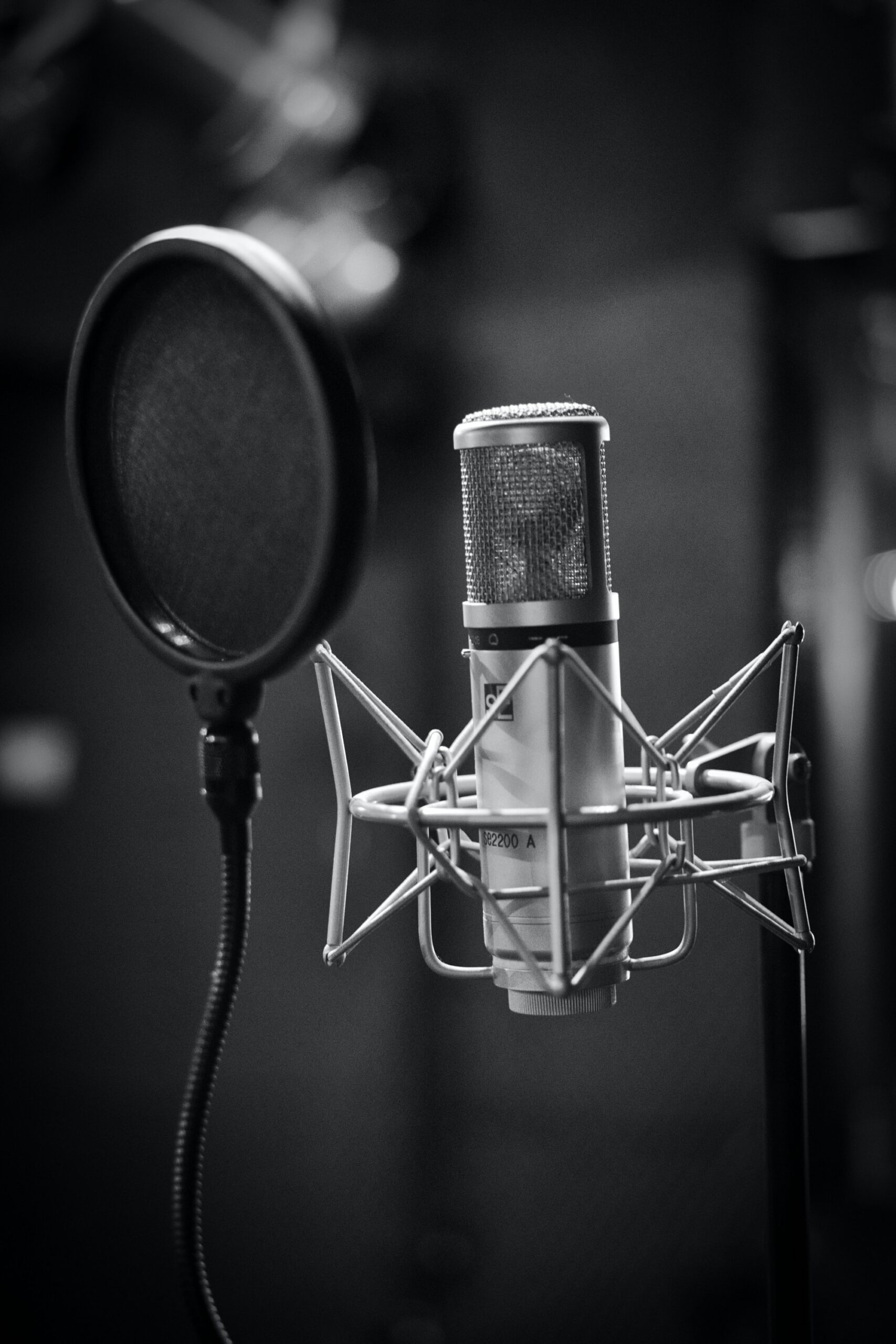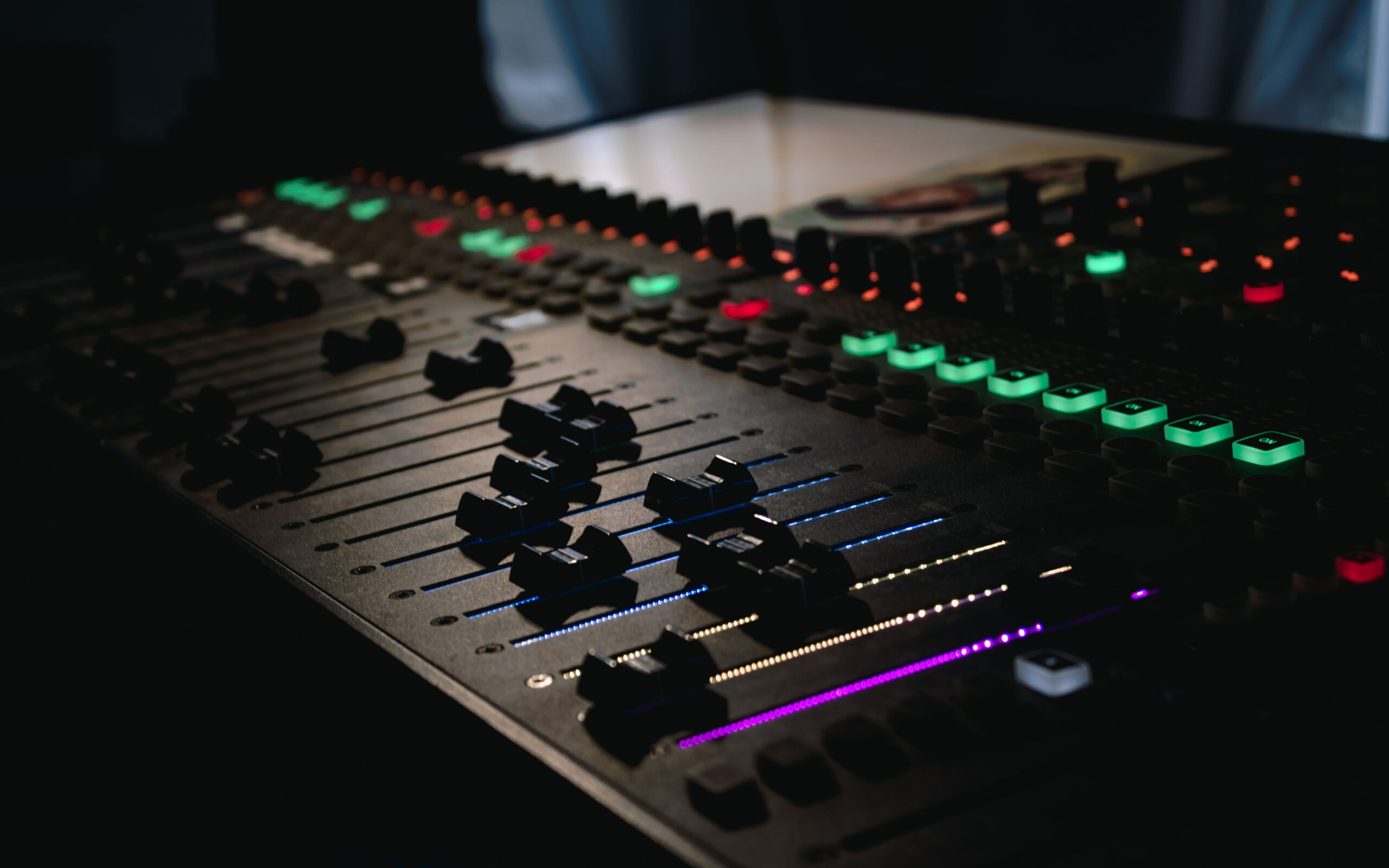Soundproofing the studio, step by step
The rule of thumb is to first install soundproofing material on the walls and then on the floors and ceilings: Carpeting, mineral wool is used on the walls. If you round corners in a room, you can improve the soundproofing of walls. The thicker the wall, the better the sound insulation in the room. Additional walls 2-3 cm apart will improve the sound quality in the studio. Plastic windows with high quality triple-glazed windows with an airtight construction. Preferably, the windows should be covered with shutters or interior curtains. Silent air-conditioning system installed.

Floors are covered with carpet, parquet, mineral wool mats. Floating screed with a thick substrate that is not in contact with the walls will improve sound quality. Carpets can also be laid. Carpets, stretched ceilings or specialised sound absorbing materials are used for soundproofing ceilings. Install sound absorbing doors that can be soundproofed. Double or triple doors with filled cavities are suitable. The door should close tightly.
Sound absorption methods
Increase mass density. When the ventilation system is installed, an acoustic duct and an S-shaped MDF drainage system are fitted. A filter and a grid are placed over the opening and the edges are fixed with acoustic foam. Absorption of vibrations by constructing additional walls of sound-proof blocks which are connected by an acoustic membrane.

Avoids interconnections with other rooms. Sound insulation panels are installed to reduce noise levels, reflect sound in the right direction and get rid of sound at certain frequencies. Filling gaps made of air. Gaps are created in the walls, which are filled with mineral wool, porous foam.
Recording studio soundproofing options
Depending on your goals, preferences and budget, you can choose from a variety of soundproofing options: A screed of at least 5 cm is placed on the floor, ceilings and walls are plastered. Gaps and cracks are filled with foam. On the floor, the screed is placed according to the level and screed markers. After that, soundproofing panels are installed on the ceiling and walls. Acoustic panels for installation in the recording studio. They allow you to reduce noises of different origins. The use of acoustic foam to neutralize shock vibrations and airborne vibrations. The material is similar to raised panel boards. The soundproofing of the studio must be done accurately: the size of the room, its characteristics, and a suitable material must be taken into consideration.

The studio must be soundproofed so that no extraneous noise can enter. Acoustic foam helps regulate the sound quality inside the room. The help of a sound engineer is essential. Our staff will select the type of soundproofing material, the number of sheets and their size, and perform the soundproofing work to create the optimum conditions for sound recording.

